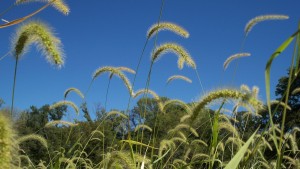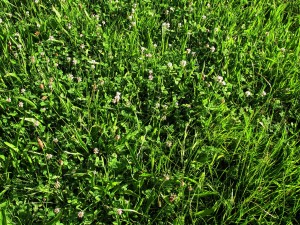If you own a farm and have animals that feed on pasture grass or hay, managing your pasture can really increase your profit. We will talk about some tips for improving your pasture which may yield higher profits for your farm.
Due to high feeding costs, some farmers may put their livestock on pasture grass early this spring. But early spring grazing typically has negative effects on season-long foraging. This blog will mainly talk about some strategies that you could implement this spring to benefit from your pasture grasses.
Here are three tips that you might consider implementing this spring
1. Allow your grass to grow before spring grazing
Managing your pasture early in the spring is more important and has a long lasting effect throughout the entire season. A healthy productive pasture is your ultimate key to cost management and livestock production.
During the early spring, your pasture grasses are just beginning to green out and grow. It’s important that you allow your grasses to grow. Grazing on grasses before the third leaf formation stage could reduce carrying capacity up to 50% in some cases.
“Cattle that graze plants before they are 4-6 inches tall are removing the leaf and eliminating the ability for that plant to be efficient at harvesting sunlight. Overgrazing early is a sure way to kill plants, reduce pasture stands, and open space for weeds.” Says Travis Meteer – University of Illinois, Extension Orr Agricultural R&D Center.
2. Evaluate your alfalfa stand
 Do not neglect your hay field. Dr. Bruce Anderson of University of Nebraska-Lincoln Extension forage specialist writes in a recent edition of Bruce Anderson’s Hay & Forage Minute that “I know you are tempted to rush ahead to prepare for corn and bean planting. But don’t forget about your alfalfa. Even a short delay could be too late. With all the alternative cropping and forage options available to you, there is no good excuse for having low production from fields due to a thin stand of alfalfa.”
Do not neglect your hay field. Dr. Bruce Anderson of University of Nebraska-Lincoln Extension forage specialist writes in a recent edition of Bruce Anderson’s Hay & Forage Minute that “I know you are tempted to rush ahead to prepare for corn and bean planting. But don’t forget about your alfalfa. Even a short delay could be too late. With all the alternative cropping and forage options available to you, there is no good excuse for having low production from fields due to a thin stand of alfalfa.”
Evaluate your grass field and if your field is too thin and needs some additional plants like oats for extra hay or orchard grass for permanent help, you need to do it now.
3. Using nitrogen fertilizers for pasture health
Nitrogen based fertilizers are important for increasing the growth and quality of your pasture grasses. Ammonium nitrate is a major source of nitrogen used in the United States. Ammonium nitrate is soluble in water and does not produce as much acid as other forms of nitrogen fertilizers do. However, costs of fuel and natural gas used in fertilizer synthesis can make synthetic nitrate fertilizers expensive. Alternative source of nitrogen could be ammonium sulfate and urea for forage production systems. When applying fertilizers, it is important to stay within the recommended amounts for your pasture grass.
Animal manure is also an excellent source of nitrogen for pasture grass. Organic fertilizers don’t have any environmental impacts when applied properly. Growing clover and legumes in your field as companion plants can also help improve nitrogen levels of your soil. They contain nitrogen fixing nodules on their roots.
Conclusion:
 With grazing lands becoming scarce and farming increasingly expensive, it is important to maximize your pasture production through planning and proper pasture management. Even though you would be tempted to graze your animals on early spring grass, it is important to know the right time and the right grass size before grazing on pasture, so that you could feed your livestock more efficiently. With proper techniques and fertilizers, you should be able to save money and increase your farm production.
With grazing lands becoming scarce and farming increasingly expensive, it is important to maximize your pasture production through planning and proper pasture management. Even though you would be tempted to graze your animals on early spring grass, it is important to know the right time and the right grass size before grazing on pasture, so that you could feed your livestock more efficiently. With proper techniques and fertilizers, you should be able to save money and increase your farm production.
P.S: – You could grow luscious micro-green grasses with our micro-green fodder system. Have you tried our DIY systems? Now is the best time to grow your own micro-green fodder. Click here to get DIY plans for proven livestock feeding systems.
To learn how you can setup a DIY system please contact us at 303-495-3705 or Click here to book a meeting with us. You can also get your Feed in A Box Microgreens (fodder) from us to see how great it is!!
Please leave your questions or comments in the comment box below or visit our Facebook Page and leave your comment there. We’d really appreciate it.
Source: Sustainable Livestock Nutrition
Related article and resources:
- Tips on Pasture Management & Feeding Heat-Stressed Livestock | Sustainable Livestock Nutrition
- Tips On Animal Management & Care for Spring | Sustainable Livestock Nutrition
- Grass Growth and Regrowth for Improved Management | Developmental Phases
- Pastures Need Time before Spring Grazing – The Cattle Connection
- Bring Clover On Over – Hobby Farms
- Grasses for Hay and Pasture : Fertilizer recommendations : University of Minnesota Extension
- How You Could Feed Livestock More Efficiently | Sustainable Livestock Nutrition
- Fodder For Livestock – Make Your Own DIY Sprouted Fodder System | Sustainable Livestock Nutrition
- How You Could Feed Livestock More Efficiently | Sustainable Livestock Nutrition




I am glad I could bring forth to you some great memories. Growing up on a farm in the ctunory was such a wonderful experience for me. I am very lucky that I still have the ability to go home and visit. I don’t know how many pictures I have taken of the out buildings, old barns, sheds, and chicken coops over the years.